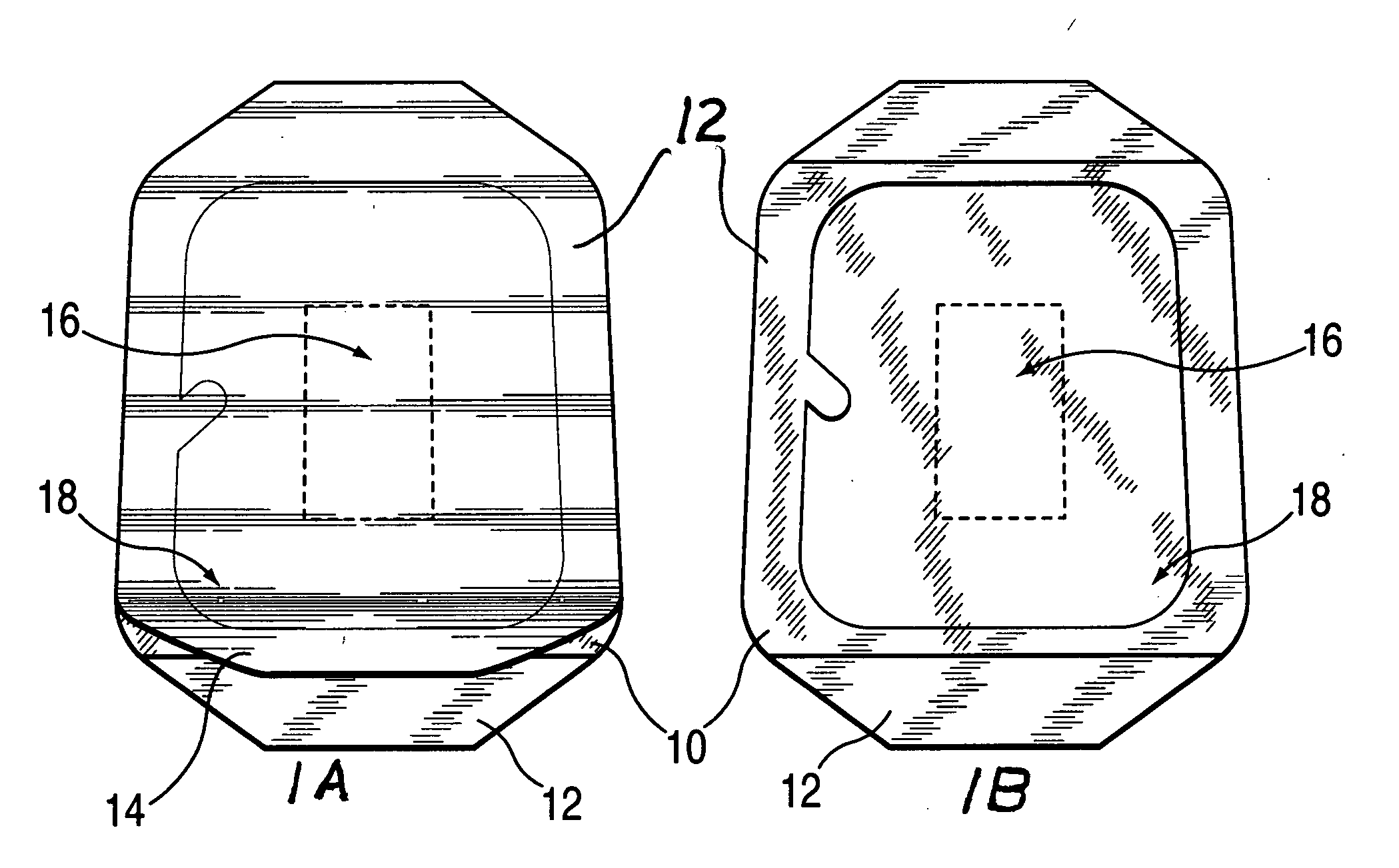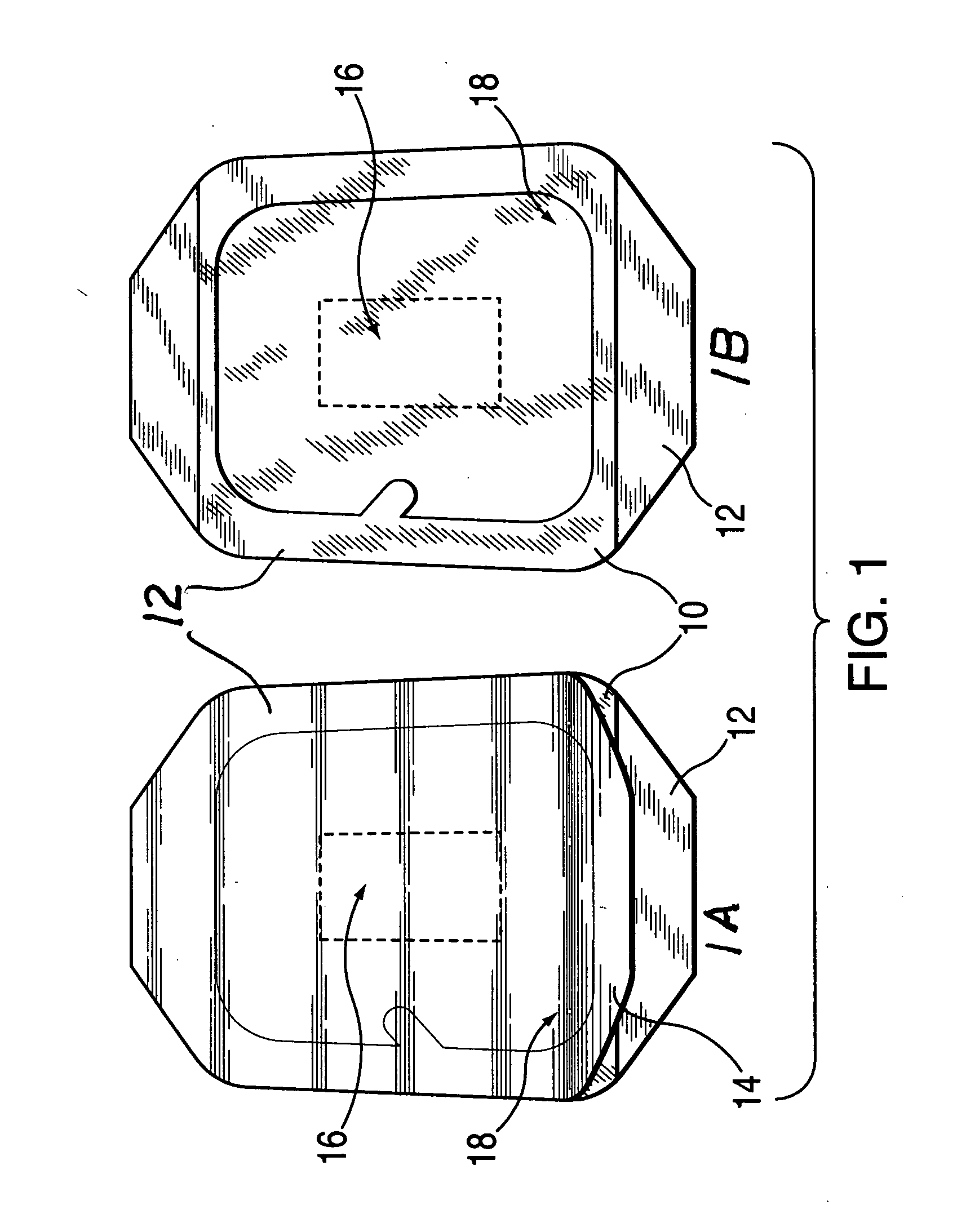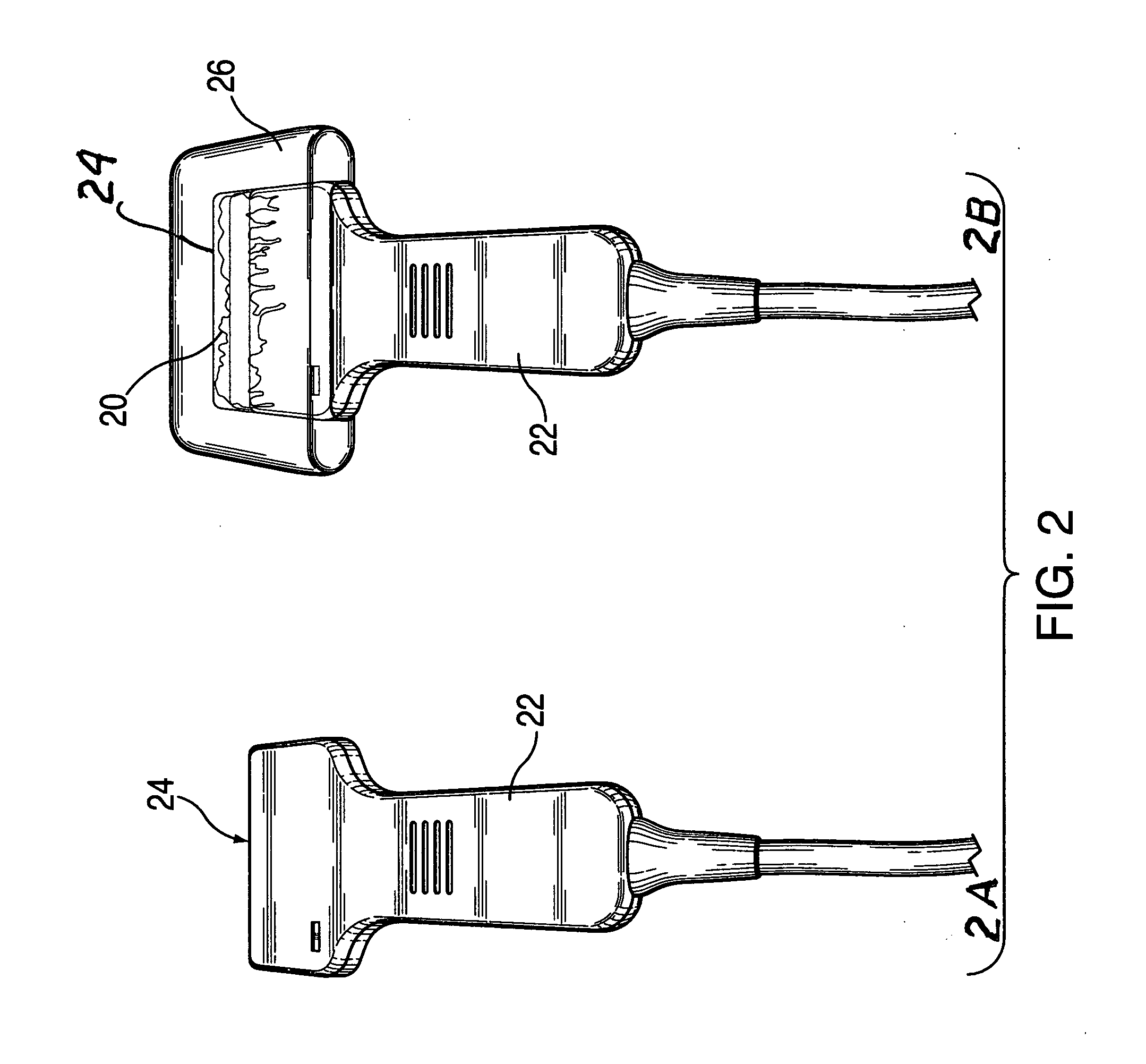Protective thin film dressing for therapeutic and diagnostic ultrasound
a technology of therapeutic ultrasound and protective film, applied in the field of protective film dressing, can solve the problems of sensitive instruments, high cost of transducers, and increased risk of dropping fragile probes, and deliver therapeutic treatments that provide little protection against contamination
- Summary
- Abstract
- Description
- Claims
- Application Information
AI Technical Summary
Benefits of technology
Problems solved by technology
Method used
Image
Examples
Embodiment Construction
—FIGS. 1 to 10
[0035] Directing attention to FIG. 1 of the drawings, two images of a thin film dressing 10 are illustrated. Thin film dressing 10 is typically transparent in nature and normally encased in an outer packaging to keep thin film dressing 10 sterile. FIG. 1 shows two images of thin film dressing 10 both of which have the outer packaging removed. Thin film dressing 10 has two surfaces. In FIG. 1a, thin film dressing 10 shows a support frame 12 on the outer surface and a film backing layer 14 covering the opposite surface. The purpose of film backing layer 14 is to provide protection to an adhesive area 18 applied on the outer edges on one surface of thin film dressing 10. Thin film dressings 10 are extremely thin (ranging in microns) and are very flexible. Support frame 12 provides assistance during application and allows for easy handling. Support fame 12 helps reducing unwanted folding of thin film dressing 10 when thin film dressing 10 is applied to various surfaces.
[0...
PUM
 Login to View More
Login to View More Abstract
Description
Claims
Application Information
 Login to View More
Login to View More - R&D
- Intellectual Property
- Life Sciences
- Materials
- Tech Scout
- Unparalleled Data Quality
- Higher Quality Content
- 60% Fewer Hallucinations
Browse by: Latest US Patents, China's latest patents, Technical Efficacy Thesaurus, Application Domain, Technology Topic, Popular Technical Reports.
© 2025 PatSnap. All rights reserved.Legal|Privacy policy|Modern Slavery Act Transparency Statement|Sitemap|About US| Contact US: help@patsnap.com



